Multi-Phase Flows
The AECFDL’s work in multi-phase flow simulation spans a wide range of applications. The key step underpinning this activity was the development of novel low-diffusion upwinding methods valid for real fluids at all speeds in the late 1990s. Several (semi)-production-level codes were developed from this basis, including specialized algorithms (and physical models) for simulating reactive gas-solid flows in circulating fluidized bed reactors and water cavitation induced during projectile penetration. Another focal point has been the simulation of supercritical fluids undergoing rapid expansion. In initial applications, the working fluid was supercritical carbon dioxide, and the intent of the studies was to predict the nucleation and growth of a polymeric secondary phase dissolved in the supercritical fluid. This work was later extended to model phase transitions occurring in the injection of supercritical ethylene /methane mixtures. Nucleation / growth sub-models developed during these efforts have been leveraged by the U.S. Air Force to predict the effects of water condensation in hypersonic wind tunnels. Specialized algorithms for ensuring sharp capturing of phase interfaces have been developed and used to simulate primary breakup of liquid jets during air-assisted atomization and pressure-swirl atomization.
Images
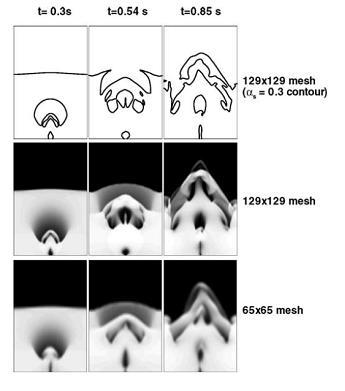
Gas injection into a minimally-fluidized bed
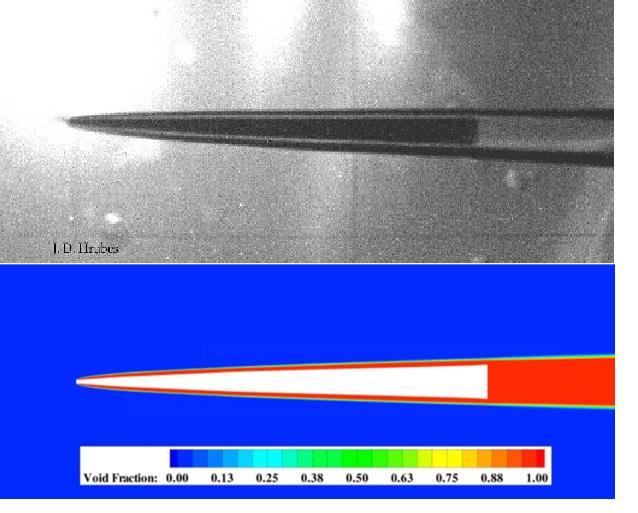
Supercavitating projectile in water
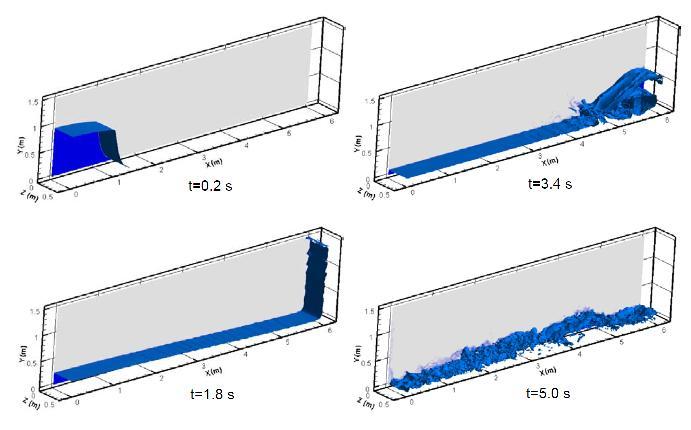
Three-dimensional water-air ‘dam-break’ problem
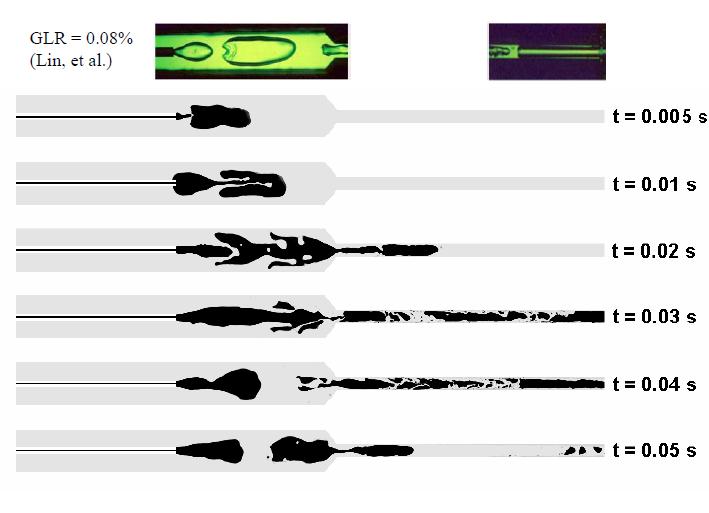
Evolution of vapor volume fraction in an ‘in-out’ aerated-liquid injector
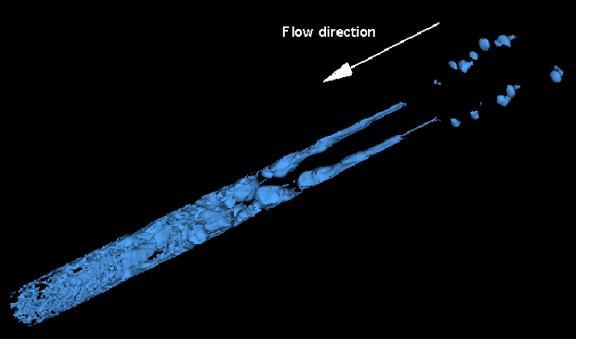
Iso-contours of gas-phase volume fraction (‘out-in’ aerated-liquid injector)
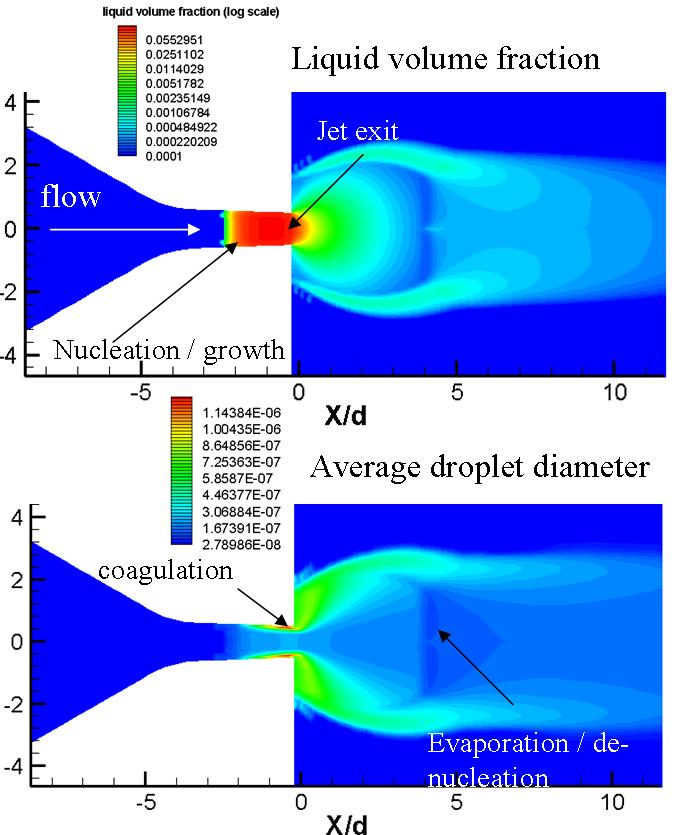
Homogeneous nucleation of droplets during injection of supercritical ethylene

Evolution of conical jet structure with increasing Reynolds number (left to right) during pressure-swirl atomization
References
Edwards, Z.C., Edwards, J.R., Lin, K-C., and Carter, C. “Simulation of Supercritical Ethylene Condensation in Beryllium Injectors” AIAA Paper 2013-0893, January, 2013
Robichaud, G., Dixon, R.B., Potturi, A.S., Cassidy, D., Edwards, J.R., Sohn, A., Dow, T.A., and Muddiman, D.C. “Design, Modeling, Fabrication, and Evaluation of the Air Amplifier for Improved Detection of Biomolecules by Electrospray Ionization Mass Spectrometry”, International Journal of Mass Spectrometry, Vol. 300, 2011, pp. 99-107
Cassidy, D.A., Edwards, J.R., and Tian, M. “An Investigation of Interface-Sharpening Schemes for Multiphase Mixture Flows” Journal of Computational Physics, Vol. 228, No. 16, 2009, pp. 5628-5649.
Star, A.M., Edwards, J.R., Lin, K.-C., Cox-Stouffer, S., and Jackson, T.A. “Numerical Simulation of Injection of Supercritical Ethylene into Nitrogen”, Journal of Propulsion and Power, Vol. 22, No. 6, July-August, 2006, pp. 809-819.
Neaves, M.D. and Edwards, J.R. “All-Speed Time-Accurate Underwater Projectile Calculations using a Preconditioning Algorithm”, Journal of Fluids Engineering, Vol. 128, No. 2, 2006, pp. 284-296
Mao, D., Edwards, J.R., Kuznetsov, A.V., and Srivastava, R.K. “Three Dimensional Simulation of a Circulating Fluidized Bed Reactor for Multi-Pollutant Control”, Chemical Engineering Science, Vol. 59, No. 20, 2004, pp. 4279-4287.
Mao, D., Edwards, J.R., Kuznetsov, A.V., and Srivastava, R.K. “Development of Low-Diffusion Flux-Splitting Methods for Dense Gas-Solid Flows,” Journal of Computational Physics, Vol. 185, No. 1, 2003, pp. 100-119
Franklin, R.K., Edwards, J.R., Chernyak, Y., Gould, R.D., Henon, F., and Carbonell, R.G. “Formation of Perfluoropolyether Coatings by the Rapid Expansion of Supercritical Solutions Process, Part 2: Numerical Modeling” Industrial and Engineering Chemistry Research, Vol. 40, No. 23, 2001, pp. 6127-6139.
Edwards, J.R., Franklin, R.K, and Liou, M.-S., “Low-Diffusion Flux-Splitting Methods for Real Fluid Flows with Phase Transitions,” AIAA Journal, Vol. 38, No. 9, 2000, pp. 1624-1634
